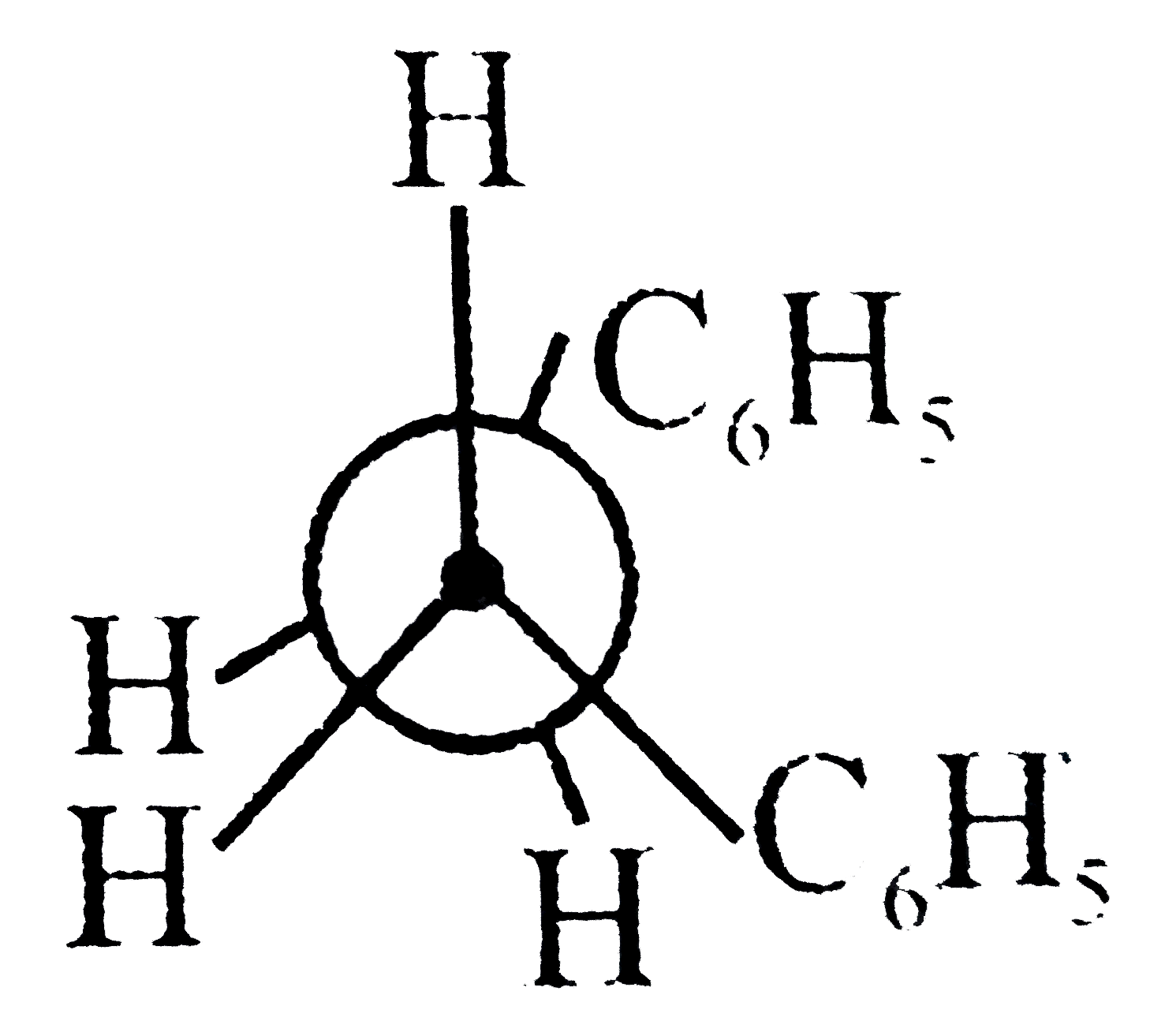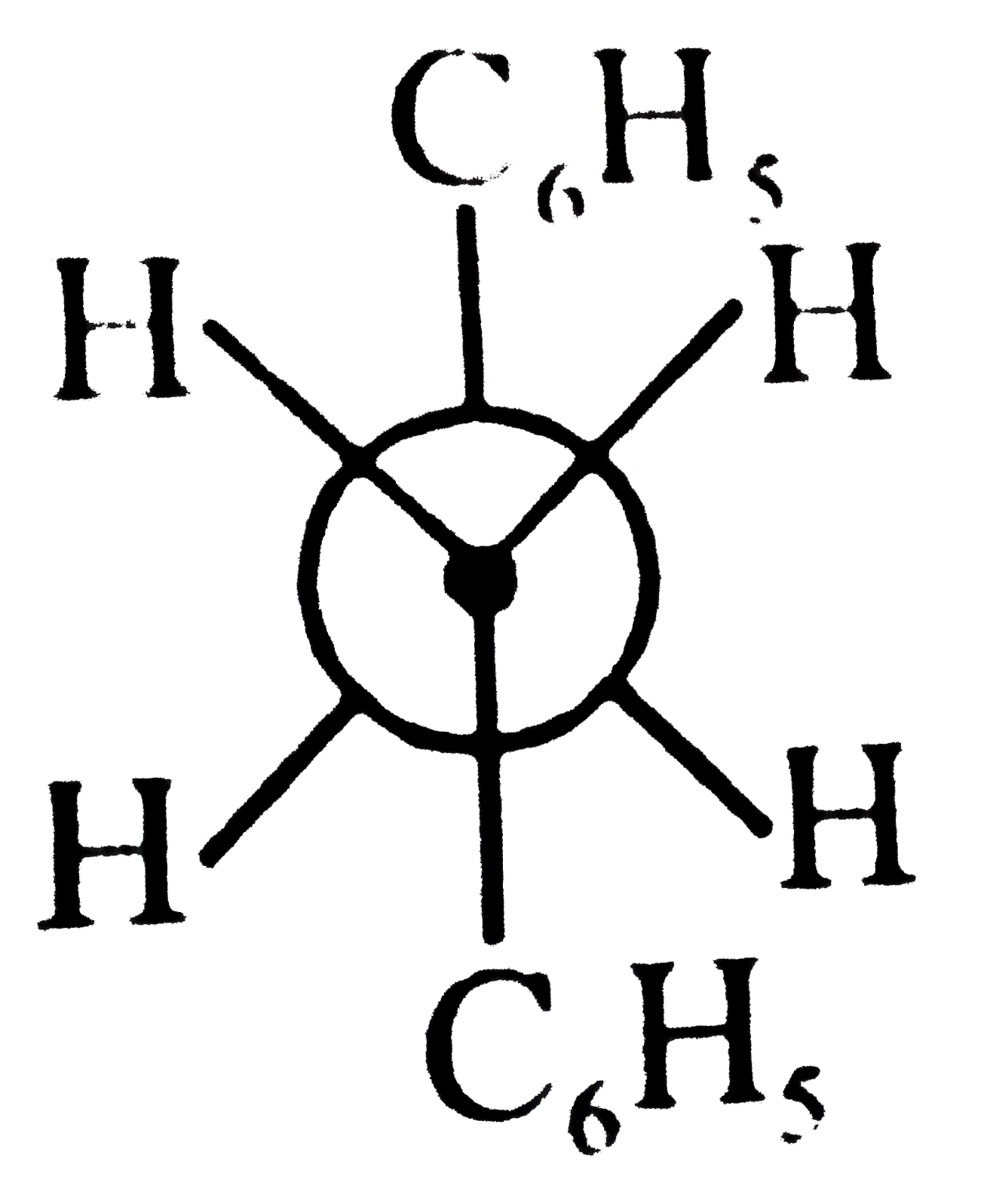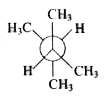The most stable conformer of 1, 2-diphenyl ethane is:-




The correct Answer is:C
To determine the most stable conformer of 1,2-diphenyl ethane, we need to analyze the conformations of the molecule and understand the effects of steric hindrance and torsional strain.
1. Identify the Structure:
- The molecule 1,2-diphenyl ethane consists of an ethane backbone (C-C) with two phenyl (C6H5) groups attached to the first and second carbon atoms.
2. Draw Newman Projections:
- To analyze the conformers, we can draw Newman projections looking down the C-C bond. This will help visualize the spatial arrangement of the phenyl groups relative to each other.
3. Classify Conformers:
- The conformers can be classified into two main types: staggered and eclipsed.
- Staggered conformations have groups positioned 60 degrees apart, while eclipsed conformations have groups aligned with each other.
4. Evaluate Steric Hindrance:
- Since phenyl groups are bulky, they will experience significant steric hindrance when they are close to each other. In eclipsed conformations, the phenyl groups are directly aligned, leading to maximum steric repulsion.
5. Analyze Staggered Conformations:
- Among the staggered conformations, we need to evaluate the distance between the phenyl groups. If they are too close, there will still be some steric repulsion, but it will be less than in the eclipsed forms.
6. Identify the Most Stable Conformer:
- The most stable conformer will be the one where the phenyl groups are as far apart as possible. This is typically found in the staggered conformation where one phenyl group is above the plane and the other is below the plane, minimizing steric interactions.
7. Conclusion:
- After analyzing the different conformers, the most stable conformer of 1,2-diphenyl ethane is the staggered conformation where the two phenyl groups are positioned opposite to each other, minimizing steric hindrance and torsional strain.
Final Answer:
The most stable conformer of 1,2-diphenyl ethane is the staggered conformation where the two phenyl groups are positioned opposite to each other.
- The molecule 1,2-diphenyl ethane consists of an ethane backbone (C-C) with two phenyl (C6H5) groups attached to the first and second carbon atoms.
- To analyze the conformers, we can draw Newman projections looking down the C-C bond. This will help visualize the spatial arrangement of the phenyl groups relative to each other.
- The conformers can be classified into two main types: staggered and eclipsed.
- Staggered conformations have groups positioned 60 degrees apart, while eclipsed conformations have groups aligned with each other.
- Since phenyl groups are bulky, they will experience significant steric hindrance when they are close to each other. In eclipsed conformations, the phenyl groups are directly aligned, leading to maximum steric repulsion.
- Among the staggered conformations, we need to evaluate the distance between the phenyl groups. If they are too close, there will still be some steric repulsion, but it will be less than in the eclipsed forms.
- The most stable conformer will be the one where the phenyl groups are as far apart as possible. This is typically found in the staggered conformation where one phenyl group is above the plane and the other is below the plane, minimizing steric interactions.
- After analyzing the different conformers, the most stable conformer of 1,2-diphenyl ethane is the staggered conformation where the two phenyl groups are positioned opposite to each other, minimizing steric hindrance and torsional strain.
The most stable conformer of 1,2-diphenyl ethane is the staggered conformation where the two phenyl groups are positioned opposite to each other.
Topper's Solved these Questions
Similar Questions
Knowledge Check
The most stable conformation of 2, 3-dimethyl butane is :
A B
B C
C Dnone of these
Dnone of theseWhich one of the following is the most stabilised conformer of 1, 4-cyclohexane diol?
A B
B C
C D
D
The most stable enolic form of 2, 4-pentanedione is :
ACH2=OH∣CH−CH2−O∣∣C−CH3BCH3=OH∣C=CH−O∣∣C−CH3CCH2=CH∣OH−CH2−C∣∣O−CH3DCH3=C∣OH=C=C∣OH−CH3
